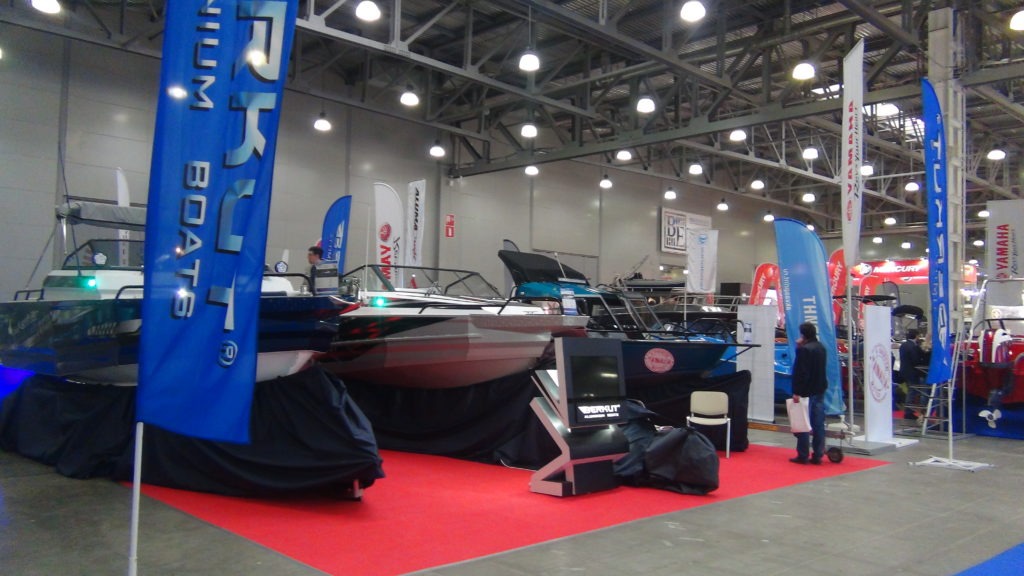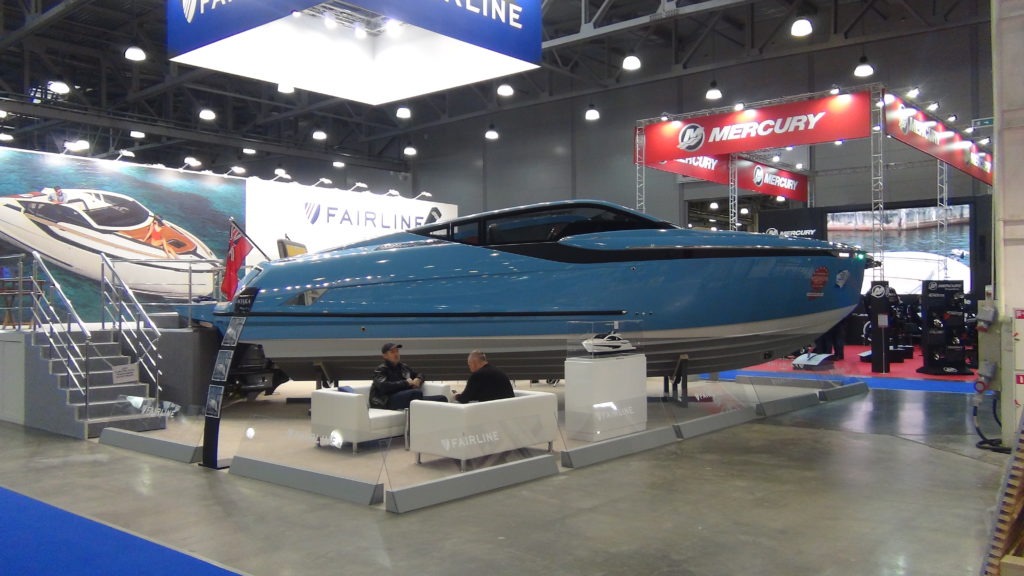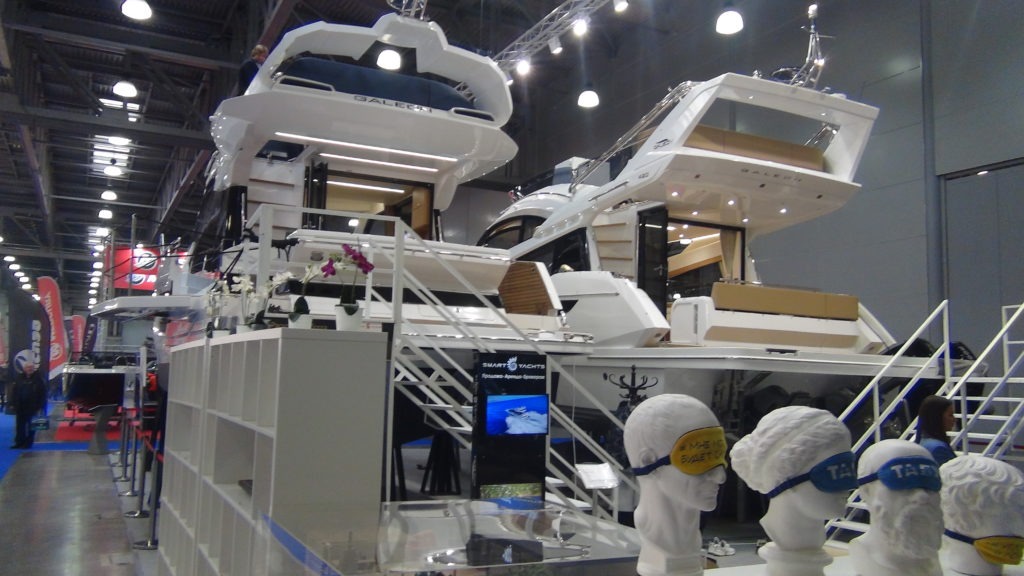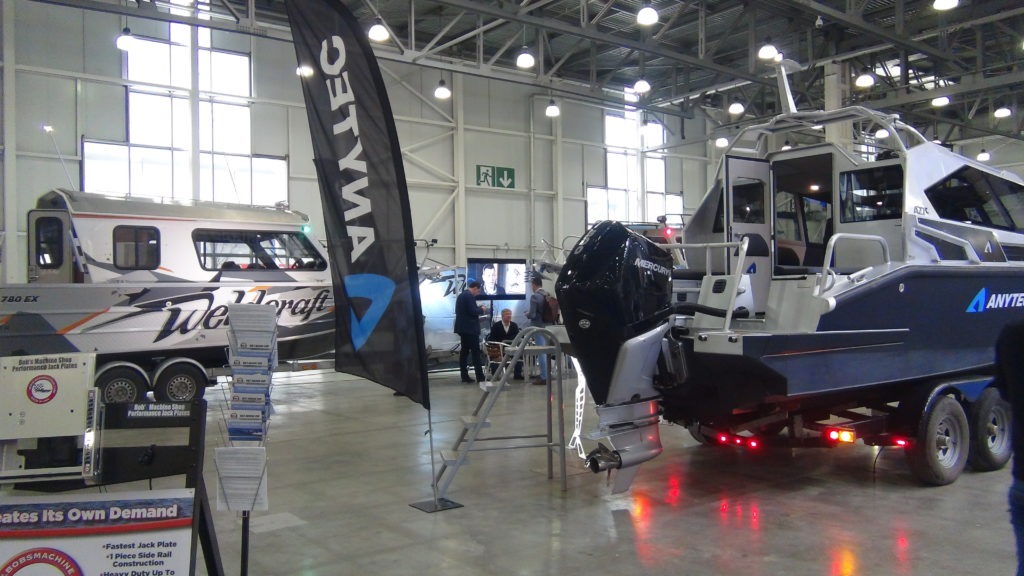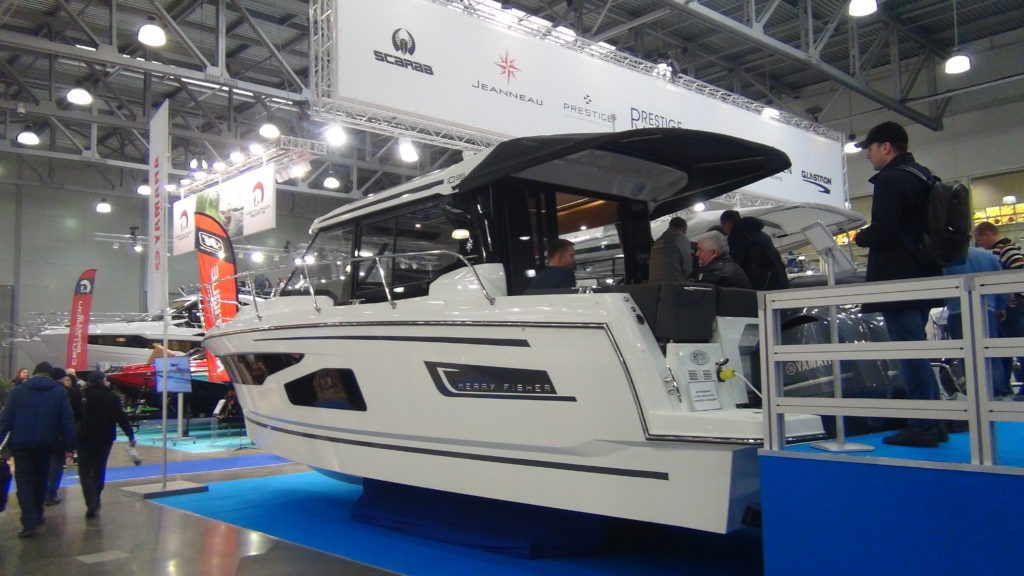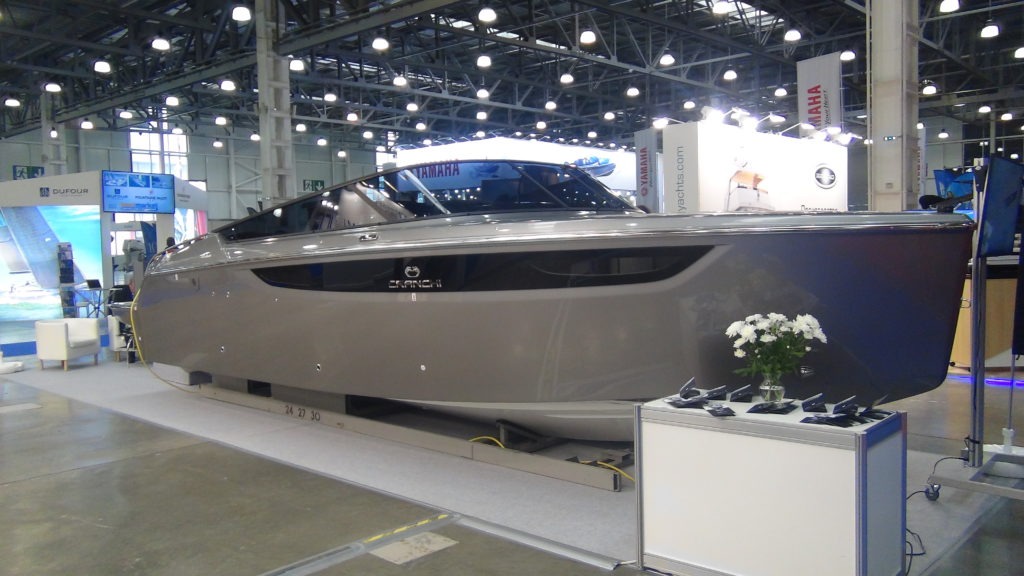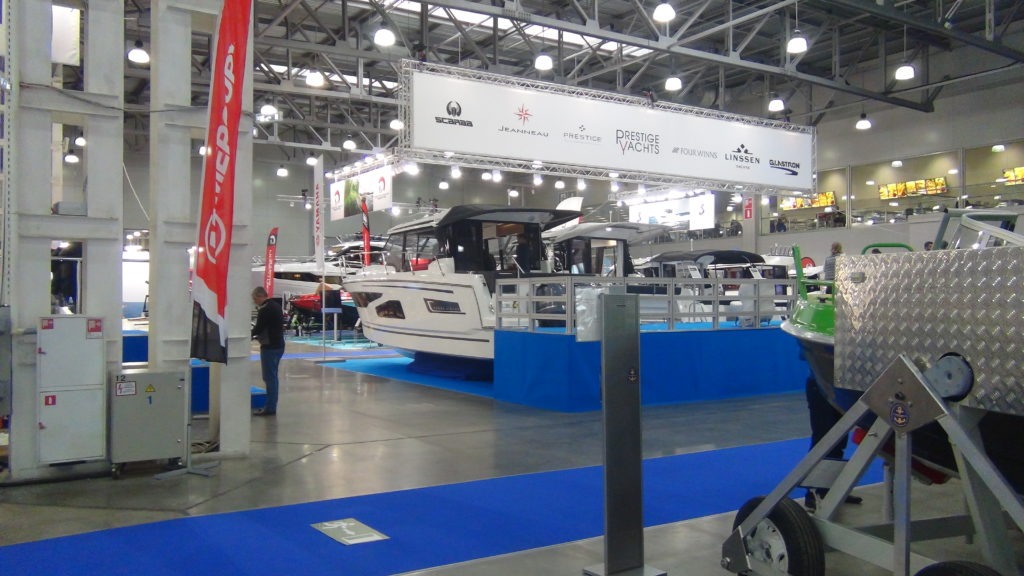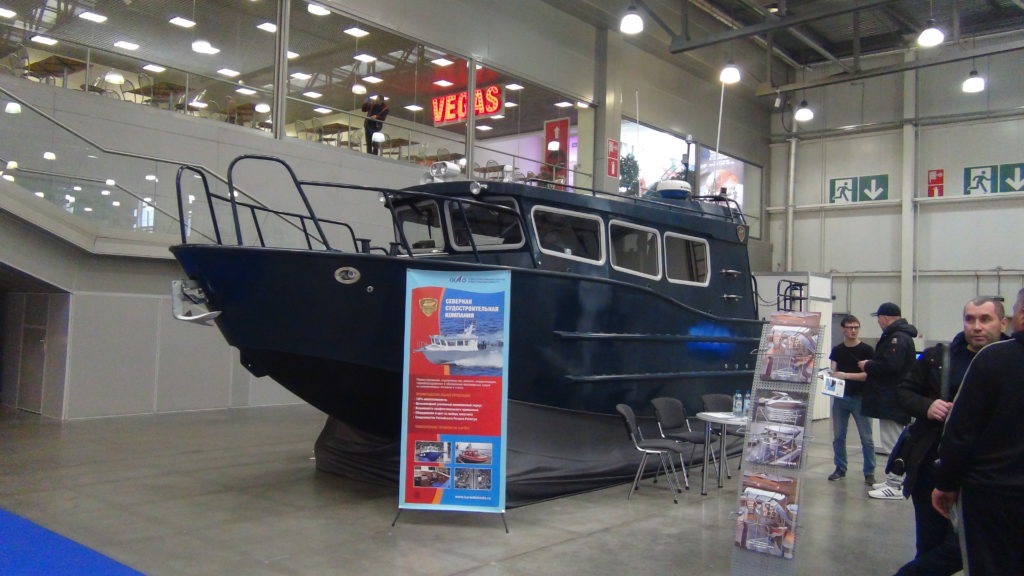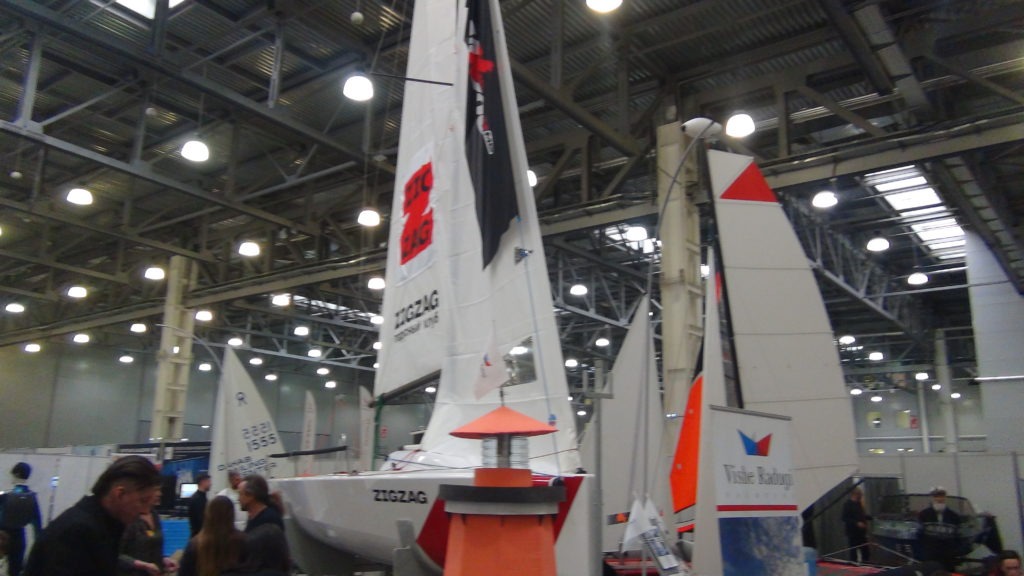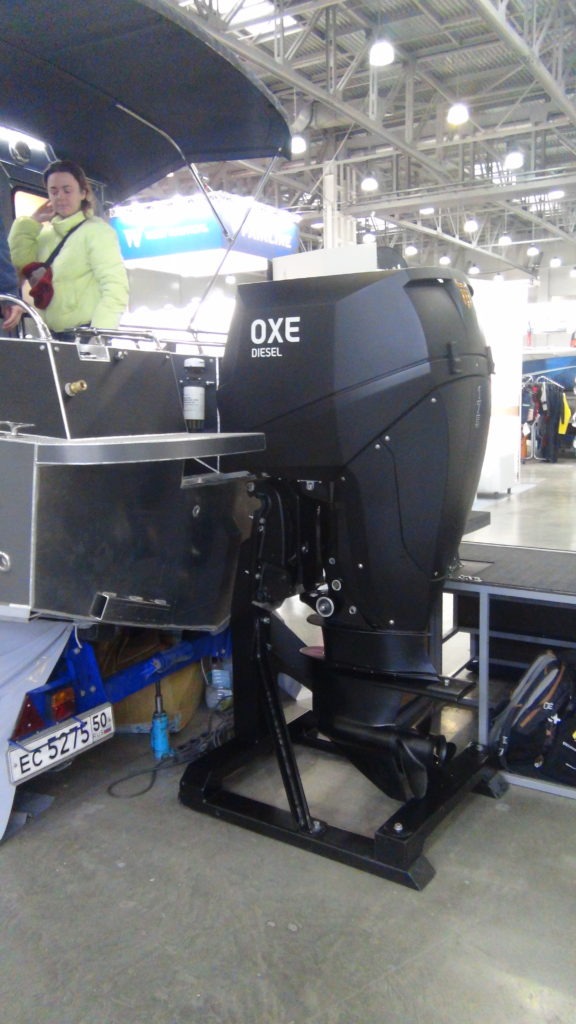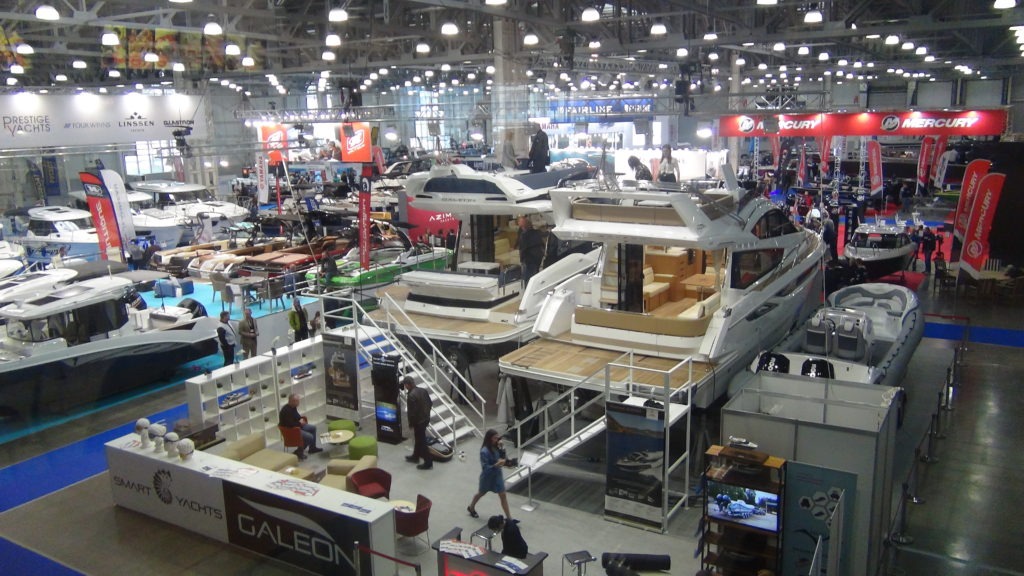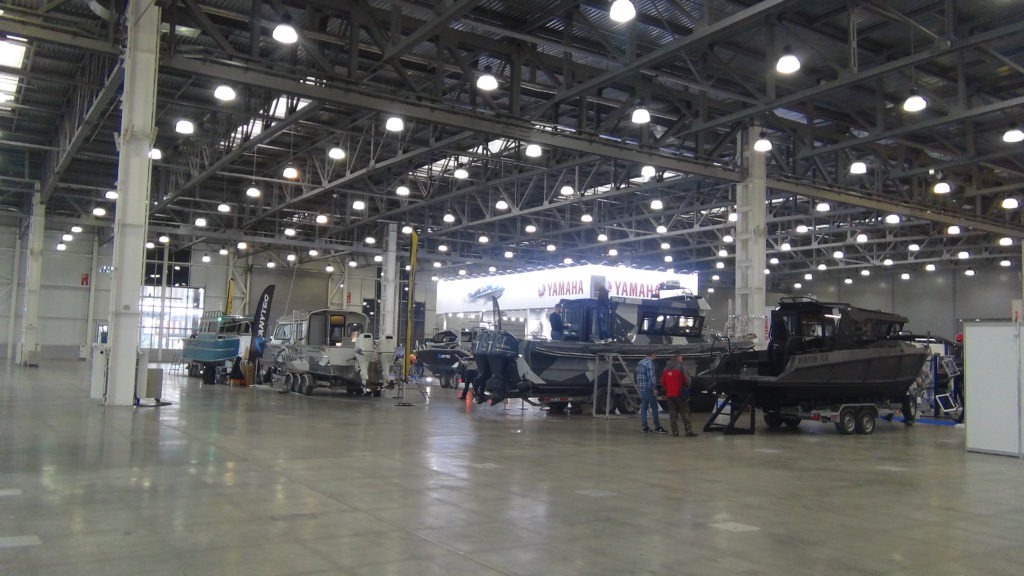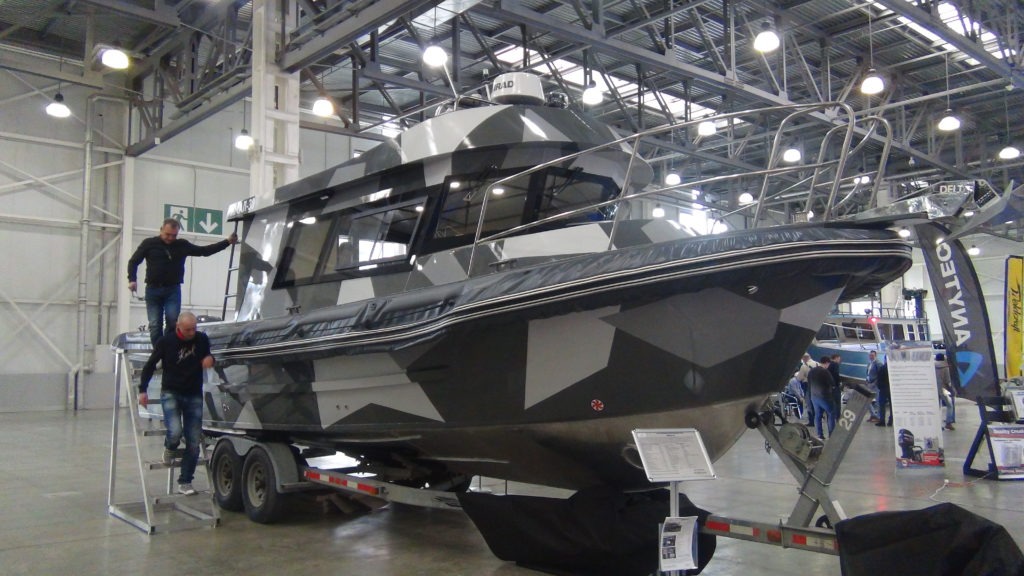MOSCOW–The Moscow Boat Show conducted here March 5-9 in the Crocus City Expo center occupied two exhibition halls with total square of 19,000 sq.m., but it was much different in several ways than previous shows.

The number of boats shown was 30% less than during last year’s event. And the organizers of the show left a lot of empty space even in the dedicated halls. This looked strange because often there were only narrow passages between boats.
Surprisingly, more than 50% of the boats at the fair were produced domestically. Jeanneau, Beneteau and some other brands were also here, brought by a local dealer, but in smaller sizes and numbers than last year’s show. Some EU and Turkish shipyards exhibited at the fair, but did not bring anything besides marketing materials.
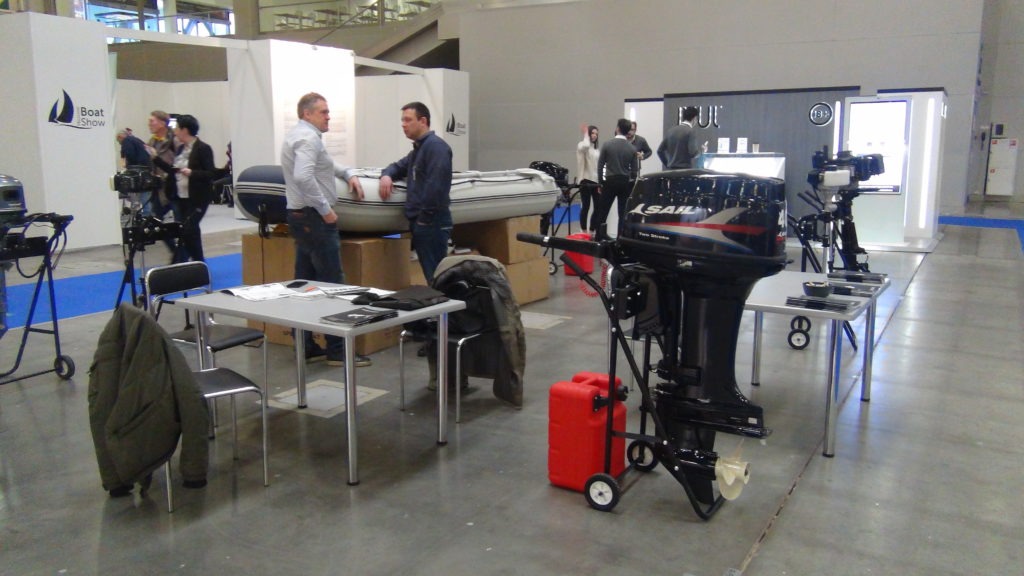
Chinese outboard motors are new in Russia 













Russian boat makers, on the other hand, have increased their presence. Although the major pleasure boat builders – Velvette Marine from Kazan, for example – did not participate, there were many new names. Among them were– K-Artel (Saratov), Yamal (St Petersburg), Berkut (St Petersburg), and Barents Boat (Arkhangelsk).
Fiberglass is not very popular among Russian boat makers; most of the Russian boats shown were made of aluminum. Also, most of the smaller boats were powered by outboard motors, but the larger models were equipped with stern-drive engines. There also were a few jet boat models.
The first hall held exhibitors showing exponents such as, items for fishing, diving, water pools for models launching, boat trailers and so on. The second hall was dedicated to motor boats.
At the fair, there were 65 units with the length above three meters, and 10 of them had stationary engines. Only four of the vessels shown at the fair could be considered as “yachts.” They were the Galeon 400 and Galeon 420 from the Polish shipyard, Fairline F-33, and Italian Cranchi.
The most expensive vessels at the fair were priced at about € 400,000. Access to them was restricted and the rules were tighter than a year ago, and exhibitors often required advance registration. Given these restrictions, not many people visited the yachts. And the rest of the motorboats shown at the fair were either too small, or too “utilitarian,” not designed for comfortable vacation.
At the moment, the most popular stationary engine among local boat makers is the Mercruiser. The next one is Volvo. Local engines are not very popular yet.
The main suppliers of outboard motors at the fair were Yamaha and Mercury with their standard motors in the range from 3 hp to 300 hp. There also were some newcomers. Swedish Simco Marine showed its outboard engine OXE brand.
Generally, OEMs offer diesel motors in the 125-300 hp range. In Russia, it’s presented by company Diesel, which is working with Scania marine engines. Chinese motor builders were represented by Wuyi Henghai Tools Ltd., which showed outboard motors powered by gasoline, diesel, electric, and even solar panels. The dealer promises they will be 4-5 times cheaper than similar hp products from market leaders.
We did not see at the fair any so-called “dolce vita”, so usual for this show a few years ago, such as luxury cars, motorhomes, expensive marinas and real estate. They were all gone.
Thus, we see that the show has completed its turn from “vanity fair” for wealthy Russian businessmen to a small local boat exhibition. It looks like most of the luxury boat makers have deserted the Russian market, serving rich Russians from abroad. And with coming economic turmoil, the remaining companies will reduce local offerings even more. However, given this situation, domestic boat makers are feeling more comfortable. They offer durable products without glamour at quite a cheap price. Maybe, this is what is demanded by the Russian market today. PSR
Maxim is a Marketing Consultant for Power Systems Research in Russia.

